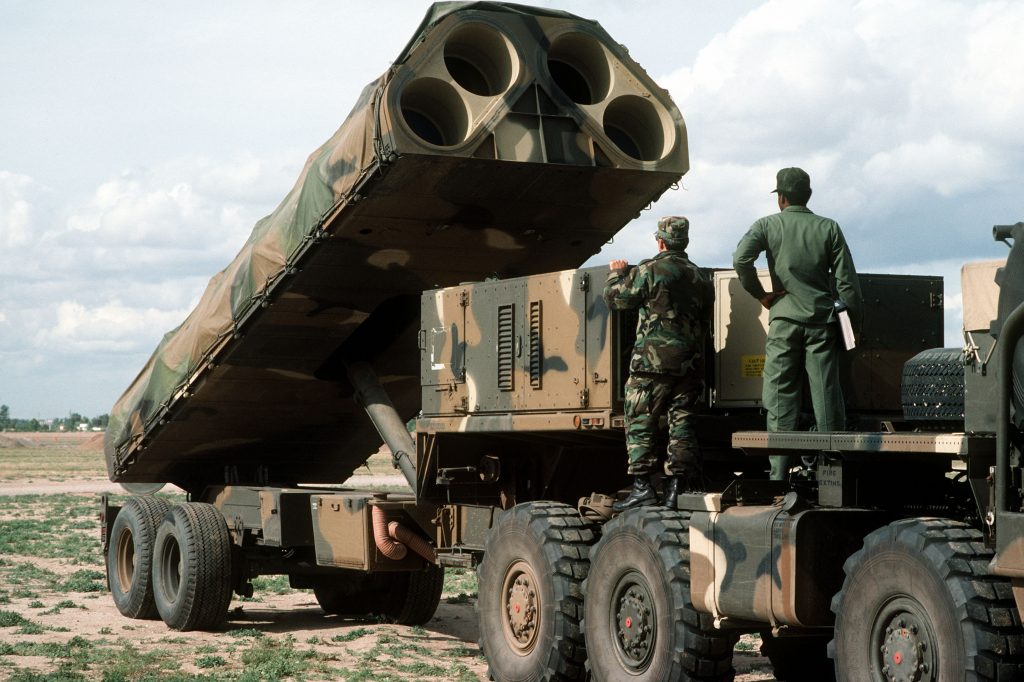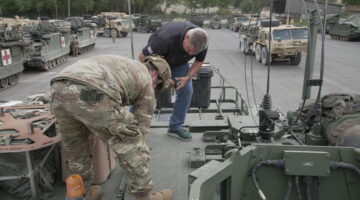
As budgets flatten, friction grows. The tectonic plates shaping the armed services’ budgets shift. We witnessed the first sharp crack of those plates colliding last week, when the man who oversees America’s bombers and missiles at Air Force Global Strike Command called a key part of the Army’s modernization efforts — the 1,000 mile missile — “stupid.” One might be tempted to call those fighting words, but that would be an exaggeration in the world where nuclear weapons and long-range cannons reign. Billions of dollars are at stake. Crucial missions are at stake. What does a former commander of US Army Pacific — now the deputy head of the Association of the US Army — think of his service colleague’s sentiments? Read on! The Editor.
In a stunning slap at a sister service, the commander of Air Force’s Global Strike Command said March 31 that the Army’s deep strike effort was “a stupid idea” that was wasting money on something the Air Force “has mastered.”
As the former U.S. Army Pacific commanding general, it is difficult to understand how a senior military officer could be so out of touch with the direction America’s most threatening adversaries have taken over the past 10 to 15 years. I’m also disappointed that at a critical time in the defense budget process, Air Force Gen. Timothy Ray would try to plant the idea that the Army is wasting money on something he thinks the Air Force has perfected.

In fact, Pentagon planners are carefully working on new warfighting concepts in which U.S. forces and their partners will deter and win fights by overwhelming adversaries with multiple dilemmas.
That warfighting concept, endorsed by all the services, is why the U.S. Army has made long-range precision fires and effects one of its top modernization priorities. It provides combatant commanders with multiple options to “put more challenges on our potential competitors,” Army Chief of Staff Gen. James McConville said in March when talking about Army contributions to the multidomain warfighting concept. “We are all together in the joint force,” he said, describing hypersonic weapons with deep strike capabilities as a tool that would destroy enemy air defenses so Navy and Air Force aircraft could attack.
Someone in the Air Force didn’t get the message about the multiple dilemma joint force plan.
The truth is the U.S. faces growing strategic threats from China, Russia and other potential competitors whose capabilities have expanded to negate the advantages once enjoyed by the U.S. military. This requires a response that presents adversaries with a host of simultaneous or near-simultaneous dilemmas across the domains of air, land, sea, space and cyberspace. This is exactly what the Joint Warfighting Concept and the Army’s Multi-Domain Operations concept are intended to do, and the current joint effort by all the services is critical to a strong deterrence or the ability to fight and win if deterrence fails.
As the U.S. Army Pacific commander, we were constantly refining Multi-Domain Operations across the region based on the requirement of presenting our adversaries with multiple dilemmas.
The benefit of having diverse and effective long-range precision fires was reinforced by then-U.S. Pacific Command Commander Navy Adm. Harry Harris, who challenged the Army to develop more lethal, long-range precision fires that could not only engage adversary land targets but also sink ships at sea.
The need for more options and improved teamwork continues today. “The U.S. fights as a joint force, and long-range precision fires delivered by the ground force, I think, are critically important to enhance the maneuver and positional advantage of U.S. forces in theater,” the current U.S. Indo-Pacific Command Commander Navy Adm. Phil Davidson recently said on Capitol Hill.
In numerous exercises and wargames and during critical joint task force certification exercises, we demonstrated the impressive capabilities that long-range precision fires from land gave the joint force commander. These key land-based strategic fires, along with air and sea strategic fires, presented the adversary with multiple dilemmas and significantly increased the ability of friendly forces from the land, sea and air to jointly maneuver to a position of advantage.
Nobody can fight as a joint force or make timely and effective decisions like the U.S. military working together.
One key example was the use of the Army’s long-range precision fires from land to control a key line of communication in a strait at sea. This ability freed naval forces to conduct other key tasks without tying up their forces in the strait, and it confused and outmaneuvered enemy forces.
The one-dimensional thinking of Cold War warfighting is long gone — as is service parochialism. No one service, ally or capability can go it alone anywhere without unacceptable strategic risk.
Robert Brown, executive vice president of the Association of the U.S. Army, was commander of U.S. Army Pacific.

